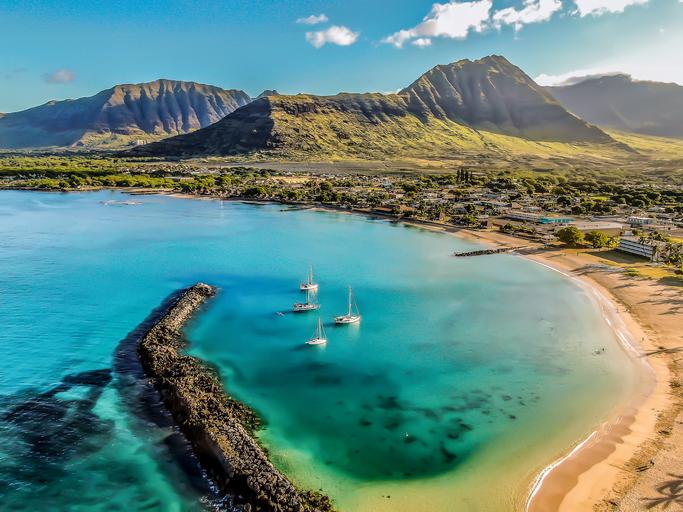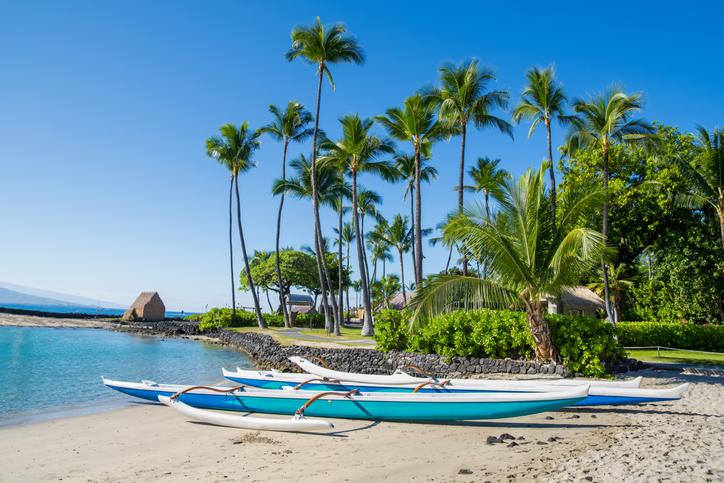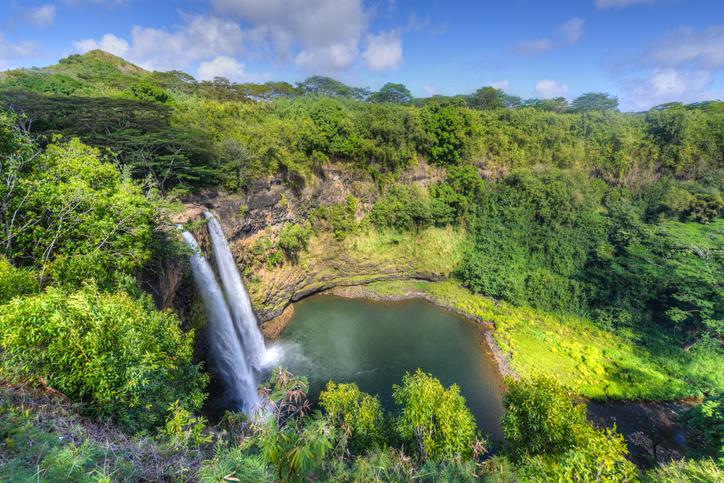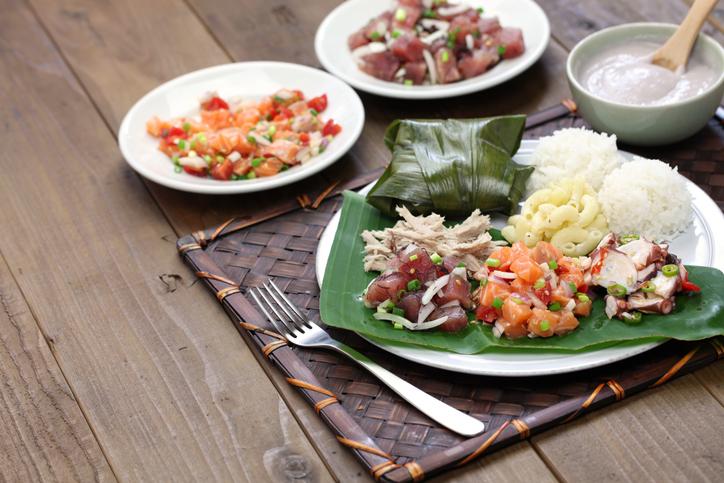Planning a trip to Hawaii doesn't have to be stressful - it can be great fun! Follow those simple steps to experience a once-in-a-lifetime holiday in the Aloha State.
1. Know the Best Time to Go to a Hawaii Vacation
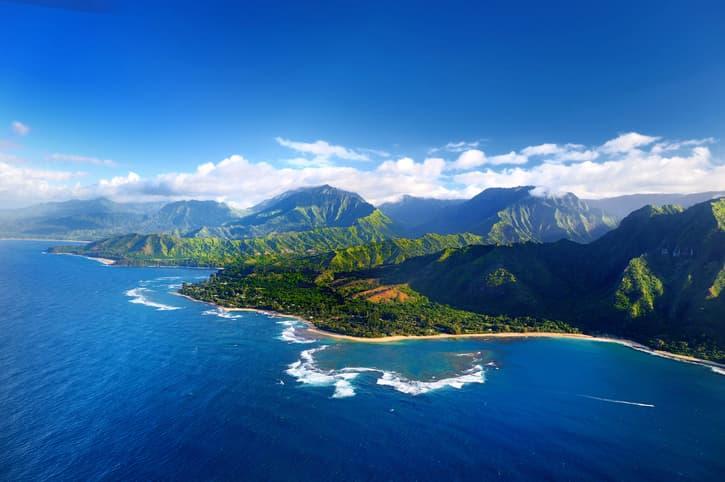
The best things about Hawaii are its balmy weather year-round, the abundance of outdoor activities, and, of course, the white sand beaches. Each island (there are 4 main islands) has a distinct evolution history with different atomic terrain, which results in varying environmental conditions.
This is why there is no such thing as "the best time to go to Hawaii" but rather when you should go to each Hawaiian island instead.
Here's a guide that explains when you can expect sunny skies and lush greenery on Oahu, Maui, Kauai, and the Big Island!
Oahu

Where: Located in the middle of the Pacific Ocean halfway between North America and Asia. It is made up of 92% mountainous volcanic surface with a few sandy beaches on its perimeter.
When to go: Winter for surfing, summer for swimming and snorkeling
Weather: Oahu is the most populated island in Hawaii with a tropical climate characterized by mild temperatures throughout the year. The average temperature hovers around 80°F (26°C), while humidity levels are generally high.
Despite this, it rarely rains on Oahu, which averages only 50 days of rainfall per year! It's best to begin your trip during the winter months when there are more chances of sunny skies and warm ocean waters ideal for surfing or playing in the sand. During summertime, trade some warmth for cool Hawaiian breezes while exploring natural wonders on land or under sea level.
Maui
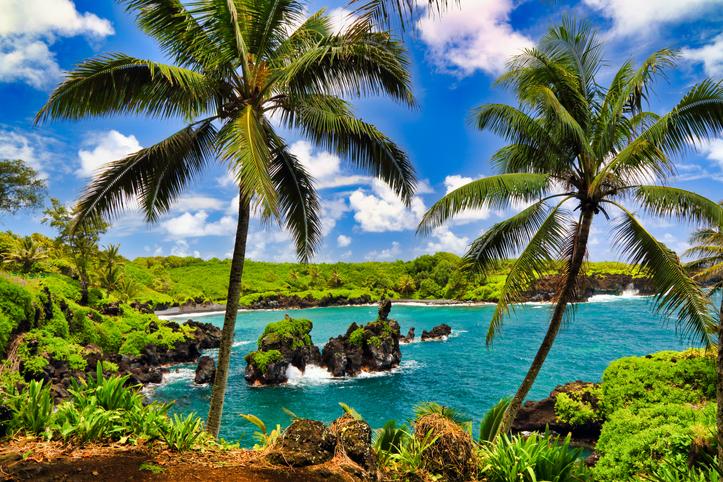
Where: In the middle of the Pacific Ocean, about 30 miles northwest of Oahu
When to go: Winter for whale watching and summer for swimming
Weather: The climate is a cross between a tropical rainforest and a semi-arid desert. It's rainy most days, but it still only rains an average of 66 inches per year! When you go to Maui, expect temperatures around 78°F (26°C) with high humidity throughout the year.
Fortunately, there are very few days when it rains in Maui despite its reputation as a "rainy" island. In fact, this popular tourist destination averages only 24 days of rainfall every month. Visitors will be able to spend most of their time outside enjoying all of the island's outdoor activities!
Big Island

Where: The Big Island of Hawaii is the largest island in the United States. It's made up of four separate shield volcanoes named Kohala, Mauna Kea, Hualalai, and Kilauea.
When to go: Winter for sunny days and summer for whale watching
Weather: This part of Hawaii has a tropical climate that features warm temperatures throughout the year with dry periods when trade winds are active. Temperatures range from 60°F during winter months when should expect more rainfall to 80-85°F during summertime when rainfall is scarce. It's much dryer on the Kona side of the island and wet on the Hilo side of the island.
The Big Island averages over 60 inches of precipitation every year so expect wet conditions especially on the north and east coasts where rainfall can reach up to 200 inches per year!
Kauai

Where: This island is located on the western edge of Hawaii and features a mostly mountainous landscape. It takes up 552 square miles (1,456 square km), which makes it the fourth largest Hawaiian island. It is also the oldest of the main islands.
When to go: Winter for dramatic views and summer for hiking in Waimea Canyon State Park or Hanalei National Wildlife Refuge
Weather: The climate of Kauai changes depending on where you are on the island and what time of year you visit. There is no "dry" season but rather dry areas such as Poipu and Kaumakani while other regions get more rainfall throughout the year. The weather is mostly affected by trade winds, but it's also impacted by the mountains that surround most of the island and how much rainfall they receive throughout a specific period.
The northern part of Kauai, where the famous Na Pali coast is located, sees more rainfall from November to April with average temperatures around 77°F (25°C). The western side of the island, which is exposed to high humidity levels, sees less rainfall from May to September with average temperatures around 80-81°F (27-28°C). In Kauai, we recommend visiting the southern and eastern parts of this charming Hawaiian island during summertime for hiking and exploring nature trails filled with beautiful tropical flowers!
Note: Avoid Golden Week
Golden Week is a time where people in Japan have four-holiday breaks without work. Hawaii has hundreds of Japanese tourists. Avoid Golden Week because it will be difficult to find hotel rooms and beaches, which will be crowded. You also probably won't be able to do all the tours or attractions you want. The price of hotel rooms seems to rocket during summer vacations in Hawaii, so don't come to Oahu this week. Golden Week is scheduled to last from the end of April to the beginning of May.
2. Pick the Best Accommodation in the Hawaiian Islands
Source

For many people visiting Hawaii, going backpacking or traveling independently is all about being free, not being locked into set schedules, or having to ask for permission around your daily movements. But making arrangements ahead of time has some real advantages.
There are few things as frustrating as turning up somewhere that you'd been looking forward to visiting only to find that there is no room available at the hostel/hotel/guesthouse/campsite and having to either turn around and go back whence you came or spend a night sleeping in the nearest park.
Here are a few tips on how to save money on accommodation when traveling to the Hawaiian islands:
Always keep an eye out for last-minute amazing deals on sites like Hotels.com or Booking.com. You can normally secure rates that are far less than those listed on the hotel's website (especially if you travel during the low season). This is sometimes a risk though, so be careful, you don’t want to be stuck without a place to stay.
Research accommodation options BEFORE you travel. Some fantastic websites list the best deals and rates on accommodation in various destinations worldwide. One such site is Trip Advisor. To save yourself the trouble, especially if you’re staying in different Hawaiian islands, and would like to stay in local independent hotels, book your Hawaii accommodation here. We list specific hotels that we have found to have great ratings, and we link you directly to the hotel’s website to book.
Various airlines also offer hotel discounts, so it's worth checking which ones fly where you want to go and comparing the prices online. It should be possible to get a very decent rate just by booking your flight and accommodation together, even better if they're on the same website!

As a vacation rental and self-catering accommodation, Airbnb has opened up a whole new world of accommodation possibilities, and you may be able to sleep in unique rooms from treehouses to cottages and even RV parks in Hawaii. You can also cut back on some expenses since you can make your own meals. However, you'll generally find places listed here are slightly more expensive than traditional hotel stays. Also, with recent laws put in place, the number of these rentals has gone way down.
If you're traveling solo or don't mind sharing a room with strangers, hostels are the cheapest way to go. They are also great fun and can sometimes be even better than staying in a hotel as you get to meet lots of other like-minded travelers who are often keen for company on upcoming adventures!
Don’t have a lot of cash? For your Hawaii vacation, consider using sites such as Couchsurfing or go for house sitting in websites such as Mind a Home or Trusted House Sitters. Keep in mind that while you can get a good deal since it's free accommodation, you will still have to spend on other things like food. Couchsurfing may not be the most comfortable way to sleep either when you’re in the islands.
3. Plan How to Travel into and Around the Islands
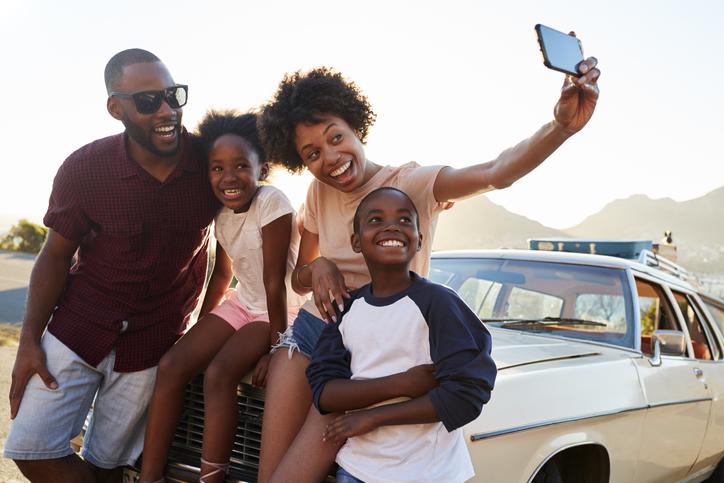
Unless you travel on a cruise, the only way to reach Hawaii is through air travel. However, flying is an expensive business, especially to an out-of-the-way destination like Hawaii, even if there are many international carriers and domestic planes that come here. If you want to save money, here are some tips on how to fly to Hawaii on a budget:
Book Off-Season Direct Flights for Your Hawaii Vacation
Booking flights at times when there is less demand will result in lower fares. In Hawaii, the peak season runs from December to April.
You can compare flight prices between the low and high seasons for this purpose. The cheapest days of the week to travel vary depending on where you're flying from and where you're flying to, so do your research before buying tickets.
Also, bear in mind that weekends could be more expensive than weekdays since many people tend to fly during this time. The same goes for public holidays.
Choose a Flexible Ticket if Possible
Flexible tickets always come with an added cost, but they also allow you to customize your travel plans and can save you quite a bit of money in certain cases.
For example, if you happen to know when and where you want to fly beforehand and there happens to be a cheap flight departing at exactly those times and places, no problem! However, if you’re not completely sure about your travel plans, it doesn’t make sense to get a ticket that is not flexible.
In looking at this, the additional cost is almost never worth it, with one exception. Southwest Airlines has a flexible ticket by default. We are not affiliated with Southwest, but they are one of our favorite airlines because of this feature. Because of Southwest, we have left this tip on our list.
Fly during Weekdays to Get the Cheapest Fare

Prices tend to increase as you get closer to your departure date, so if possible, fly during the weekdays (Monday-Thursday) rather than over the weekend. If you're able to go standby, always check for the cheapest rates on these days first before buying tickets. Similarly, flights on smaller airports are often significantly cheaper than flights on larger ones.
Use Loyalty Programs
Many airlines like Southwest have created their loyalty programs to reward regular travelers with free or discounted flights and other perks. The more you fly with an airline, the more benefits you'll receive from them - without having to pay an additional fee! Some credit cards also offer similar services where you earn points every time you make purchases using these cards, which can be redeemed for flights.
Some airlines also offer a special called "Saver Fares," which is a last-minute sale on seats that are normally refundable.
Most arrivals should be to Honolulu International Airport, while other airports include Kahului Airport on Maui and Lihue Airport on Kauai Island. You can also take inter island flights, but you have only two options: Hawaiian Airlines and Mokulele.
Rental Cars in Hawaii

Car rentals during your Hawaii trip are usually more affordable than buying or leasing your vehicle. The availability of public transportation is limited, but there are several choices when it comes to renting a car in the state. You can either rent at the airport or book online for efficient travel.
You can also roam around by booking a vehicle through Uber and Lyft. But if you want to support the state’s economy, use the Turo app.
It is a peer-to-peer car rental service that involves owners renting out their cars. It can provide cars and even other vehicles like RVs for as little as $100. However, make sure to check the condition of the vehicle before arrival, during the reservation period, and soon after you begin using it. It might be worth comparing rental rates elsewhere first.
Rental Car Rules and Tips in Hawaii
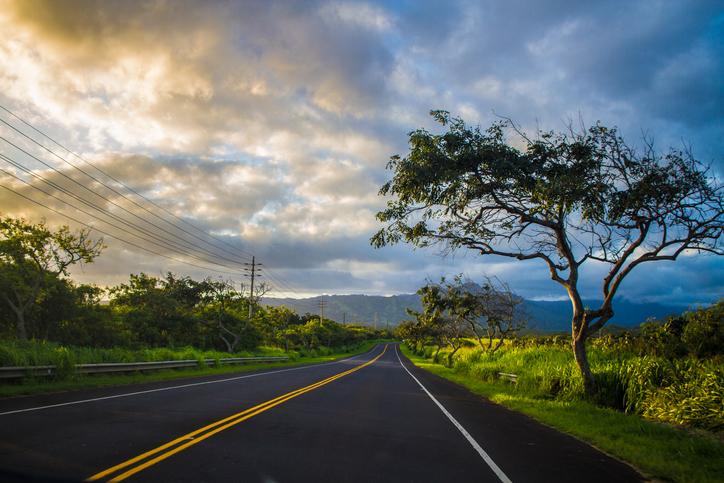
When planning a trip to Hawaii, learn both spoken and unspoken rental car rules and driving in the islands:
- When reserving a car in Hawaii, make sure that you understand all local traffic rules about when children must be seated in the proper child seat. Car hire companies usually offer assistance with instructions on where to find these seats in each vehicle before departure
- Driving in Hawaii poses some challenges because of all the street signs written in Hawaiian. Although they are not too hard to figure out, you have to drive on the right side of the road just like in mainland America.
- Drivers should take note that most streets are curvy and windy with narrow roads that only accommodate one-way traffic.
- Road conditions vary. Some roads are paved while others are still dirt paths, which make driving hazardous during bad weather or when visibility is low.
- If you plan to rent a car in Hawaii, especially for rough road traveling, it would be best to have a four-wheel-drive vehicle. This makes it easier to maneuver through rough terrain if ever an emergency occurs. Renting four-wheel-drive vehicles is also good for places with steep roads where horrendous landslides are common during the rainy season.
- Four-wheel drives can also cross shallow rivers so they are ideal for hikers and outdoor enthusiasts who might wish to camp in remote areas away from traffic and civilization. You can also opt to use two-wheel drives but this will limit your itinerary selection because of the place's rugged nature, which only four-wheel drives can handle.
- Those under age 25 may incur additional charges headed by surcharges for young drivers while car seats required for infants are also subject to extra charges. You can bring your own child seat or rent one from the company where you acquired your car rental package deal free of charge.
4. Plan Your Hawaii Trip Activities
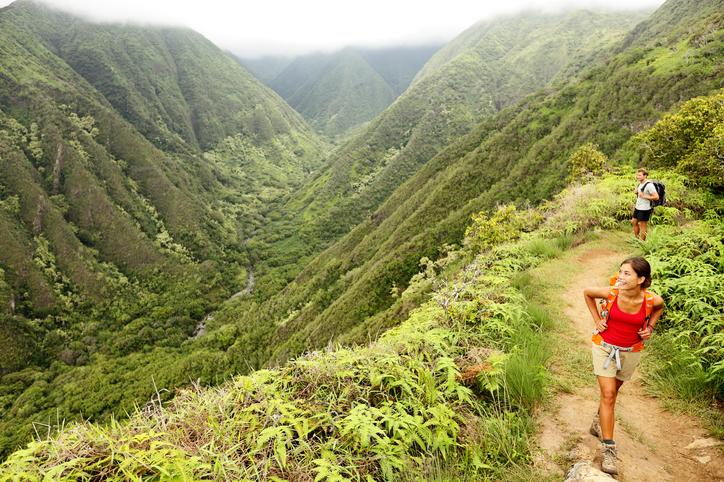
Hawaii has a lot of great things to do from the lush tropical jungle to the beautiful beaches. There's never a shortage of fun things you can do in this amazing place. Read on for some of our favorite things that you can do when you visit Hawaii:
Arts and Culture
What better way is there to experience culture during your Hawaii vacation than by visiting local arts and cultural institutions? Hawaii is home to many museums, theaters, concert halls, festivals, and more. You will have no problem finding an activity that suits your interests here! Here are some examples:
- The Bishop Museum: We're not talking about just any museum. This is THE natural history museum in all of Hawaii! The Bishop Museum has been open since 1889 and today boasts more than 24 million artifacts, treasures, and specimens. Need we say more?
- The Royal Hawaiian Center: Shopping is a favorite pastime for many people, so why not visit a shopping center that's themed after the royal family of Hawai'i? The Royal Hawaiian Center has been around since 1977 and hosts some truly upscale shops.
- Hawaii Theatre: There are few things as classic as watching a show at an old-fashioned theater! The Hawaii Theatre has been hosting shows since 1922 and is just as popular today as it was back then. Music, drama, and dance performances make this theater truly unique!
Water Activities in Hawaii Island
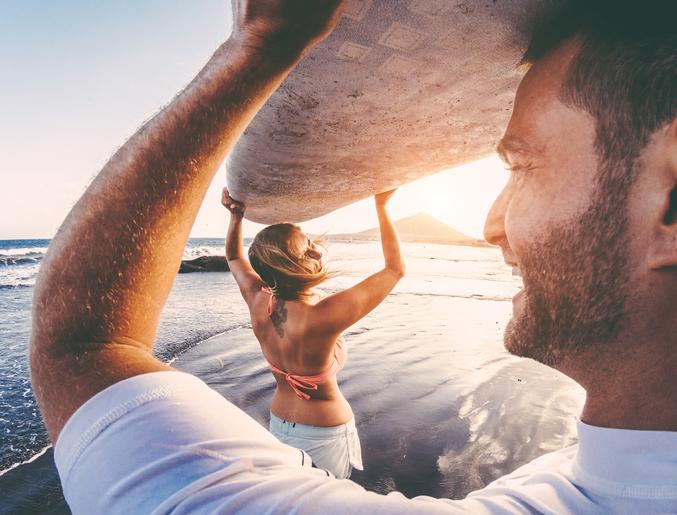
What do you think of when you think of the Hawaiian islands? You probably think about beautiful beaches along with fun water activities like surfing or snorkeling. This is definitely the best side of Hawaii! Here are some activities you can try in the water:
- Menehune Ditch: Get out your inner explorer when you visit this unique spot. Menehune Ditch is a series of stone walls that run for 23 miles all along the Waimea River. No one knows who made these walls or how old they are, but they make for an interesting sight to see!
- La'ie Point: La'ie Point is a great place to snorkel if you don't have time to go out on a tour or if you don't want to rent equipment. A reef just offshore means that the water is calm and clear, perfect for novice snorkelers!
- Hanauma Bay Nature Preserve: If you're a beginner surfer or just looking to learn during your trip to Hawaii, Hanauma Bay is a great spot. The waves here are small and rolling, so it's ideal for quiet surfing lessons. It's also one of the best spots in all of Hawaii for learning how to surf.
- Lanikai: If you want to catch some rays in total privacy, book a spot at the many resorts along Lanikai Beach. This beach has powder-soft sand and beautifully clear water just steps from the shore, so it's perfect for lounging all day long.
- Surfing: Surfing was born in Hawaii and if you don't mind getting your feet wet, it's fun to learn how to do it while you're here! Classes are commonly offered at many beaches on Oahu, including the famous Waikiki Beach. You'll be standing up and riding waves in no time!
- Snorkeling: Snorkeling is a must-try activity while you're on Oahu, Poipu Beach, Waikiki Beach, and the black sand beach of Awahua Beach in Molokai. Many tour companies offer excursions where you travel to different snorkeling locations and scuba dive for a small fee. You can even book a private tour if you want to explore the waters at your pace. Experienced swimmers can also rent masks and fins from many tour companies to explore the nearby reefs on their terms.
On days when you just want to do nothing, then just relax. Sometimes it's nice not to have any scheduled activities at all. Besides the beaches like Poipu Beach, there are also several spa treatments throughout the islands where you can relax in luxury.
Nightlife
We can't leave out Oahu's nightlife! Honolulu is undoubtedly one of the best cities in the world when it comes to having fun at night. There are plenty of clubs for dancing and drinking as well as theater and music performances if you're looking for something more laid back.
When it comes to clubbing, the North Shore is home to many popular bars and clubs with their own unique style and atmosphere. If you're looking to dance, head to Haleiwa Joe's. If you want to catch some live music, try the Pipeline Bakeshop and Creamery.
5. Enjoy the Food during Your Hawaiian Vacation

One of the important Hawaii travel tips is to try their food. Food is so important in Hawaii that they have their own cuisine: Hawaiian. The most popular dish in Hawaii would probably be Spam musubi. Spam musubi is basically spam sushi. It's simply rice topped with Spam. Different variations of this dish include using different types of meat instead of Spam usually teriyaki beef or grilled chicken.
Another famous dish on your trip to Hawaii is loco moco. Loco moco consists of white rice topped with a hamburger patty with brown gravy and a fried egg. Other popular dishes are things like chicken katsu (fried chicken), milkfish or "mahi mahi" (dolphin fish), and saimin. It’s a noodle soup consisting of eggs, green onions, sliced pork, barbecued pork, and chunks of ham. Some of these are already available in local food trucks.
Meanwhile, a plate lunch is a popular dish found in Hawaii. It's served in restaurants and poi stands. You can also make it at home (if you’re staying in an Airbnb) to take out from the supermarket or get from a drive-thru window.
The most common ingredients in a plate lunch are white rice, macaroni salad, and some sort of meat that's been cooked in soy sauce or teriyaki style. Traditionally, you would eat this meal with your bare hands.
Fruits and Coffee in Hawaii

Hawaii is the only state in the United States that grows coffee commercially. In fact, coffee is one of Hawaii's biggest exports now. It would be pretty accurate to say that Hawaiians love their coffee!
Coffee has always been readily available in restaurants and hotels for visitors who want it 24/7, but now local Hawaiian chains have opened up where locals can get their coffee fix. While some locals say that these chains don't compare to Starbucks, some people like it because it's more local and less expensive than going to Starbucks every day.
Part of what makes "local" food special is that there isn't much locally grown produce in Hawaii. Since they're surrounded by water, most of their produce has to be imported from another island or country. Because of this, almost all fruit in Hawaii is imported!
It can get pretty pricey depending on the season, though, and since tropical fruit has a short shelf life, it's usually very fresh. The most popular fruit in Hawaiian cuisine is the pineapple. Other fruits like bananas, mangoes, and guavas are also frequently found in dishes.
As you can see, planning a trip to Hawaii doesn't have to be stressful. Follow these simple steps to make sure you’ll have a grand time in the Aloha State!
If you still feel overwhelmed by all of this information and Hawaiian culture, don’t worry! Hawaiian Planner has got your back with their detailed vacation planner that will take care of everything from flights and hotels to activities and excursions.
Trust us, there is no better feeling than experiencing life on island time in paradise.
